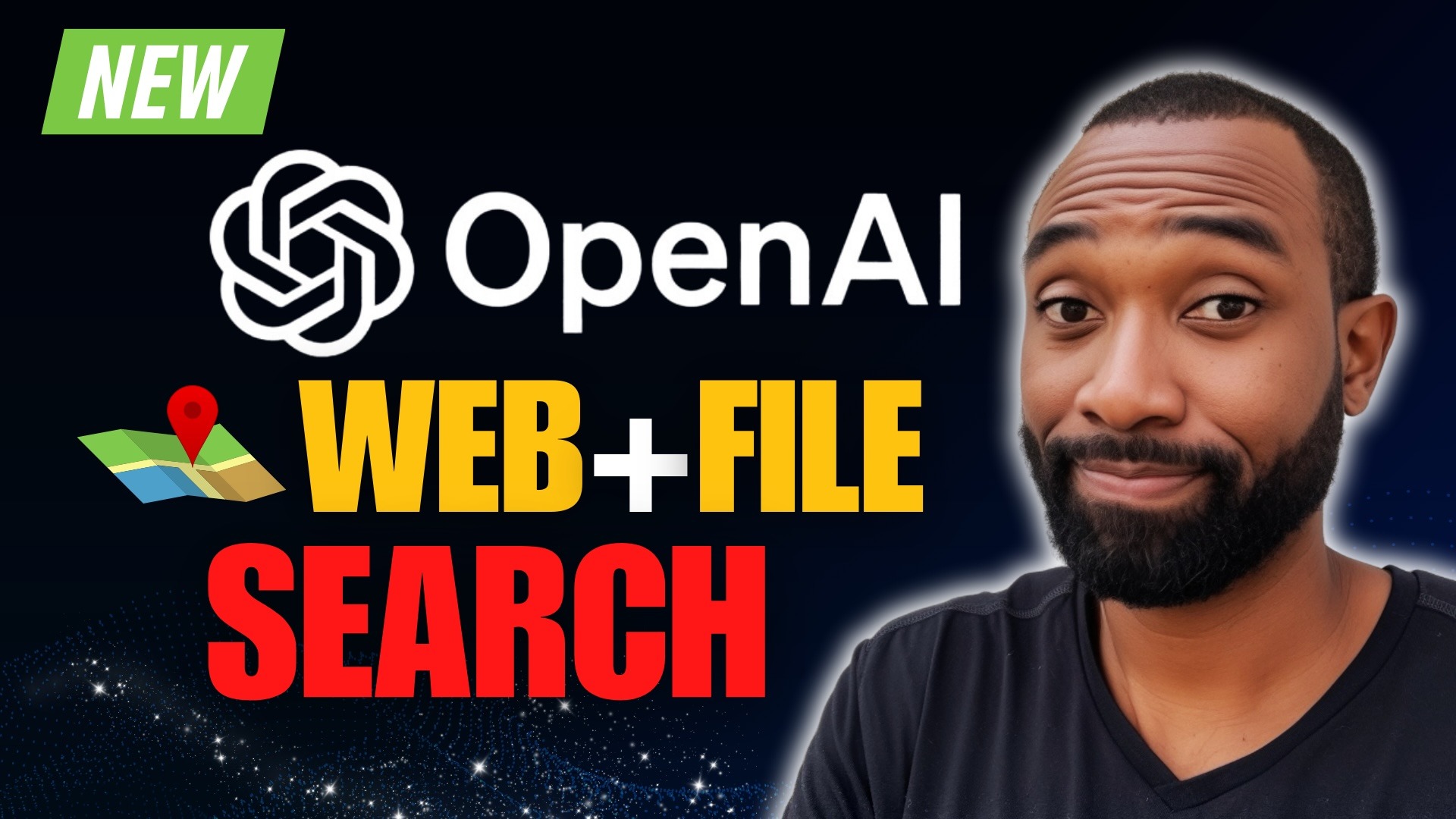OpenAI has consistently been at the forefront of artificial intelligence innovation, and their recent releases have pushed the boundaries even further. Today, I want to dive into their newly launched responses API, which, among other things, includes a web search feature.
This development allows developers to access real-time information directly from the OpenAI API, a notable advancement that promises to simplify workflows and expand possibilities.
Redefining Real-time Data Access with Web Search
In the past, integrating real-time information acquisition with large language models required collaboration with third-party tools like Tavily, SERP API, or FireCrawl. However, OpenAI’s new web search endpoint eliminates the need for these additional integrations.
You can directly ask real-time questions and receive real-time answers via OpenAI’s API. But what truly sets this endpoint apart is its user location feature. You can pass in details such as the user’s country, city, and region, enabling you to tailor applications to specific needs and locales.
For instance, imagine an application designed to help people find job opportunities. With the location-specific functionality, you can narrow search results to a particular area, like Germany or the United States, and even drill down to specific states or cities.
This capability ensures that users receive relevant and precise information.
Enhancements in File Search Capabilities
Alongside the web search endpoint, OpenAI has introduced notable improvements in their file search feature. Utilizing a vector database, this functionality allows you to upload various document types—PDFs, text files, Word documents, and extract information as needed.
This capability is particularly powerful when combined with web search, as it offers a two-pronged approach: searching your vector database first and then the web if necessary.
With this system, you can execute complex queries, such as searching for company-related information. If the system finds the needed data in your vector database, it retrieves it; if not, it turns to the web for answers. This hybrid search approach ensures comprehensive and efficient information retrieval.
Building Applications with OpenAI’s Toolset
To demonstrate the practical potential of these new features, I developed a Streamlit application that utilizes both web and file search functionalities. This app enables you to perform separate searches using either the file search feature or the web search feature.
Moreover, you can opt for a combined search approach that first queries your vector database and then seeks answers on the web if needed.
One of the key benefits realized in my application is location-specific search capability. For instance, if you’re looking to discover the best sushi restaurants, you can input a general query and explore results across the US.
However, if location matters, you can specify a place like California or even Los Angeles to get more tailored results.
Switching locations in real-time is seamless, whether you target Miami, Florida, or Atlanta, Georgia, the app retrieves relevant information specific to your chosen locale.
Endless Possibilities with OpenAI’s Innovations
The potential uses of OpenAI’s new endpoints are vast and varied. With these tools, you can address diverse needs, from building applications that assist in real-time job searches with location-specific filters to querying comprehensive datasets stored in vector databases.
The real-time, location-aware, and data-servicing combination elevates the intelligence and capability of applications built on OpenAI’s platform.
The power of these advancements cannot be overstated. We now have immediate access to up-to-date web and document data, consolidated into a flexible, highly responsive framework.
As a developer, leveraging these endpoints opens doors to creating robust, intelligent applications that are more attuned to user needs than ever before.
The links to my GitHub repository, where you can explore the application and code, are available in the video description for those eager to delve deeper. This is just the beginning of the many possibilities that these OpenAI tools unlock.
In future discussions, I look forward to exploring the OpenAI agent SDK and sharing even more insights.
Until next time, keep innovating with AI!
Need help turning your AI idea into reality? Contact me today to discuss how we can bring your vision to life!


